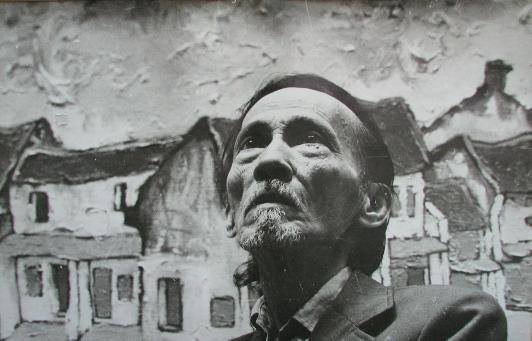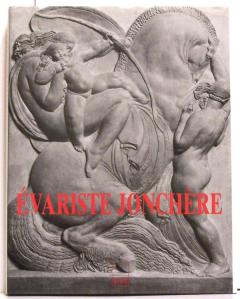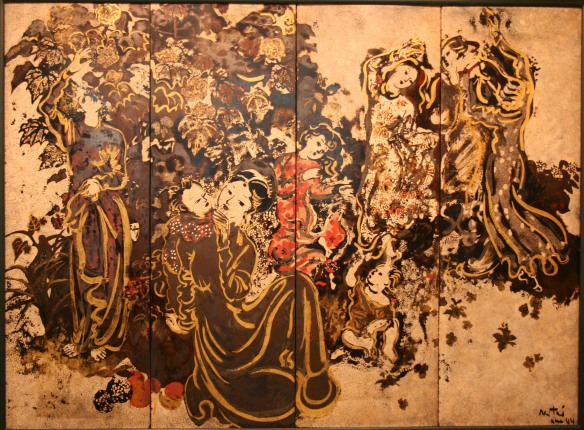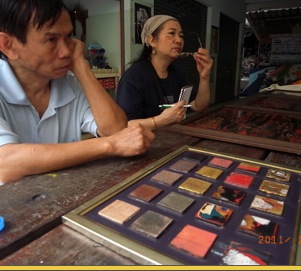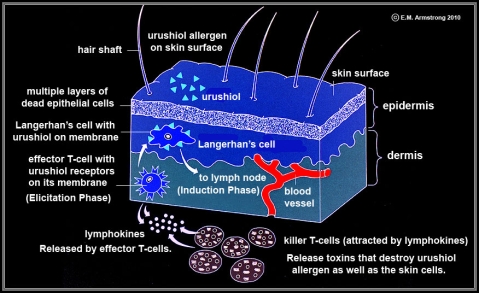document: Vietnese art doc: EARLY TWENTIETH CENTURY AND NAMED “INDOCHINA”
Posted: 2011/06/01 Filed under: Art, Asia, France, THE ECOLE DES BEAUX-ARTS IN HANOI, Urushi, Vietnam Leave a commentSTRUCTURE PAINTING IN FRANCE AND IN THE PAINTING “EASTERN OCEAN” (PRIX DE L-INDOCHINE)
WANT TO LEARN ABOUT PAINTING OF VIETNAM IN THE EARLY TWENTIETH CENTURY AND NAMED “INDOCHINA”, WE NEED TO TALK ABOUT THE PLIGHT VIA AS WELL AS THE STRUCTURE OF THE PAINTING IN FRANCE AT THE TIME AND ITS INFLUENCE FOR THE FINE ARTS.
Ngo Kim Resume
ACADEMY AND PAINTING |
|
5./National Association of fine arts (Société nationale des Beaux-Arts): in 1889, the disagreement between the artists lead to the establishment of the “National Society of fine arts” by Puvis de Chavannes, Carrière, Carolus Duran … held exhibitions at the Champ de Mars square (near the Effel Tower) and not in the Louvre. |
5./The colony of artists (artists Socíeté coloniale Fancais): The colonial exhibition in Marseilles, Louis Dumoulin, curator and art Advisor, up in the heart of the charismatic power painter of landscape and colonial countries. Then, with the sponsorship of the Ministry of colonies as well as the Governor General and maritime company, Louis Domoulin set up a number of travel scholarships (bourses de voyage). |
/society of independent artists (Artists Socíeté des Indépendants) conditions & forecast: from 1870, because it is not appropriate and not be uninstall by Bollywood strictly other classical Academy of salon, the artist JEAN BOUCHAUD (Indochinese Prize in 1924). |
8./autumn exhibition (salon d ‘ automne): |
THE SCHOOL OF FINE ARTS |
UNIVERSITY EXHIBITION |
 |
| From left to right, sitting as the teacher: Ms. Kruze (3rd), Tardieu (4th), Inguimberty (6th), South Son (7th). Top: Dispatch Centre (1), Le Van Filed (10th), Nguyen Gia Khánh (Goerges Khanh) (14th) and High end Talks in 2nd row |
PRIZE (Prix de l’Indochine)
Indochina award by the Governor of the Governor-General of French Indochina Antony Wladislas Klobukowski ban Decree in 1910, according to the initiatives of the colony of artists “(Société Coloniale artists Francais).
1./Indochina Awards prior to the school of fine arts of Indochina:
The artist has works on display in the exhibition “The colony of artists” will pass a selection, the winner of the prize will be awarded a year travel research, plus first class return ticket, a sponsor of 1,200 Dong Duong and travel free of charge throughout Indochina. Please note that the beginning of the 20th century, Indochinese worth 3. From 1925 to 1927, the exchange rate average is 14 French. In 1931, French Indochina in exchange rates table-metal (gold) and fixed is legal.
The painters were winners are:
1910 – Ferdinand Olivier (Martigues 1873-1957).
1911-Francois de Marliave (Toulon 1874-Draguignan 1953).
1912-Augustin Carréra (Madrid, 1878-Paris, 1952).
1913-Martinien Salgé (Marseille, 1878-Jouques 1946).
1914-Charles Dominique Fouqueray (Le Mans 1869-Paris 1956)
In the era of World War I (1914-1918), the award-winning Indochina interrupted until 1920.
1920 – Victor Tardieu (Lyon 1870-Hanoi 1937).
1921-Paul Jouve (1878 – Marlotte Paris 1973).
1922 – Alain Ponchin (Marseille, 1872-1934).
1923 – Goerges Michel, also known as Géo Michel (Paris, 1885-?)
1924 – Jean Bouchaud (1891 – Saint-Herblain, Nantes, 1977).
2./Prize of French Indochina after the school of fine arts of Indochina:
At the suggestion of Male Son, Vietnam, and Victor Tardieu, Indo-China in 1920, in an appeal process under the name “the art of Annam in the past, present and future” was referring to the colonial Government the issue opened a School of fine arts in Indochina.
The appellate process is standard medical by Governor Governor Martial Henri Merlin. On 27 October 1924, appears in the Official Gazette (Journal Officiel) Decree to establish a school under the name of the school of fine arts. schools will be erected at 102 the Reinach, gầnt Far Extrême, the Congregation (l ‘ Université de France) in Hanoi, under the direction and control of the House, with Victor Tardieu is principal.
Since then, according to the will of the Government and the school of fine arts of Indochina, Indochina was reform, won the time study is two years and not just one year ago. The first year for the visit, learn, learn and record the impression through paintings, scholarship is 400 Indochinese per month. In the remaining holds teaching at the school of fine arts, French Indochina, was 350 Indochinese per month and free residence in Hanoi. Before returning to France, an exhibition of the painter will be held in Hanoi and Saigon.
The painters were winners are:
1925 – Jules Gustave Besson (Paris, 1868-?).
1926 – Paul-Émile Legouez (Elbeuf 1882-?)
1927 – Raymond Virac (Madrid, 1892 — Madagascar 1946).
1928 – Henri Dabadie (Pau 1867-1949)
1929-Lucien Lièvre (Paris, 1878-?)
1930-Louis Rollet (Paris 1895-1944).
1931 – Léon Félix (Périgueux 1869-?)
Beginning in 1932, French Indochina, the painting was discovered by two years.
1932-Évariste Jonchère (Coulonges-les-Hérolles 1892-Paris 1956). Évariste Jonchère will be the holder of the position of principal of the school of fine arts of Indochina after Victor Tardieu died in 1937.
1934-Georges Barrière (Bourgogne) (1881-1944 Đồ Sơn).
1936-Jean Despujols (Gironde 1886-Shreveport 1965).
1938-Louis-Robert Bâte (Bordeaux 1898-1948).
In 1939, Adolf Hitler takes complete bridge on fire, the second world war broke out (1939-1945), French Indochina, died in the events history.
Sincere thanks Christian Billet, Chairman of the artists (artists and Société des Français) spent time you valuable exchange of ideas and help us document.
8.2006
N.K.K.
Source :http://www.vietnam-art.com.vn Copyright © 2009 Phuong Mai Art Gallery | All rights reserved.
THE TIME OF THE WAR (4)
Posted: 2011/05/09 Filed under: Art, Artist, Asia, France, Lacquer, Lacquer Painting, Modern Art, Nguyen Gia Tri, Research, Southeast Asian, THE ECOLE DES BEAUX-ARTS IN HANOI, tradition, Urushi, Vietnam, Western Leave a comment
He is then mention the war and the school to the maquis, taken over by master Vietnamese. The rise of nationalism, war and accession to independence, the partition and the reunification of the country give rise to a new stage for Vietnamese artists who leave for their cultural identity. These black years will enable them to take distance with Western education and integrate it into their history.
This new period from the 1940s to the 1970s is still dominated by the burst of four strong personalities, real founders of the modern Vietnamese art art history retained today as the
" four pillars of the temple " :Bui Xuan Phai, Duong Bich Liên, Nguyên Sàng and Tu Nguyen Nghiem.
All were born at the beginning of the twenties. He belong to the latest generation of students of the higher school of fine arts in Hanoi.
At the end of the year 1946, he have all left the capital to go to the maquis to Viet Bac and participate in the great patriotic war.
The fall of 1954, with the restoration of peace, they are all gone. Imbued with Western audacity of Picasso, Léger, even proponents of abstraction, the art of these pioneers in margin disrupts the conventions of the landscape as portrait, both styles by selected materials
The four pillars of the temple
Bui Xuan Phai (1920-1988)
Bui Xuan Phai is undoubtedly born painter of the school of fine arts of Indochina (last promotion 1941-1945) whose influence has been the most decisive in the development of the current of modern art of the past decades. It is one of the most engaging and original.
His output of school, he joined the revolutionary movement in Hanoi, and then the resistance of the Viet Bac until 1950 movement. Tired, already suffering he returned to Hanoi, where he produced illustrations for various newspapers like the nhee Vanjournal.
In 1956, he taught at the Ecole des beaux-arts in Vietnam. The following year he joined the Nhan Van Pham Gia movement (humanism - beautiful artworks), literary and artistic movement for freedom of expression, which will also quickly repressed.
In 1984, he directed his only individual exhibition in Hanoi. He died four years later then that would be realized one of his most expensive dreams: come to Paris "meets" Marquet, Rouault, Matisse, Picasso_...
Bui Xuan Phai is a very prolific painter animated of a true "rage of painting", at any time of day, on any support, even the most unexpected (newsprint, leaf book, boxes of matches or cigarettes, etc.). He painted colors so bright and staccato, almost feverishly, often identifying the reasons with a black line, by applying to the knife.
Her preferred themes were streets of Hanoi (it was kindly nicknamed "phai pho") to scenes of chéo (very popular traditional opera) and portraits
In the 1960s, he began to study the chéo, while he was preparing the decor of the silk of gold thread with author Viet Dung. Simple and bare, spiritual, and malice, aesthetics prosaic language and colour the chéo festoyants the séduisirent immediately. He then sought to develop a pictorial language that is capable of expressing any "expressiveness" of this theatrical art.
When the portraits, he in directed hundreds of friends to whom he offered without counting.
Nature generous, sensitive, with plenty of humour he was known and appreciated by all in Hanoi
He wrote in his diary: "paint, it is live and breathe, paint passionately, continuously maintain the fire." "The cool it is mourir_ what is the wealth of an artist is not the address of his hands but the richness and the sensitivity of its âme_"
Duong Bich Liên (1924-1988)
Duong Bich Liên was born in Hung Yen province, into a family of intellectuals and mandarins, it belongs to the last promotion (1944-1949) of the school of fine arts of Indochina.
In 1946, he participated in the resistance in the Viet Bac and in 1952, he has the honour to paint President Ho Chi Minh.
Although regularly with his works exposed, all of his work has been truly had only after his death.
From the 1960s, he lives withdrawn, solitary, attending only rarely even less political and artistic circles. It has never sought to show neither has sold its works.
Cultivated, refined man, he had portraits which constitute two-thirds of its works. He then applied to render any interiority and the singularity of his model, through a classic invoice.
It is probably in his paintings on the war as the trench or the night of the operation that it perceives best originality and strength, simplifying to the extreme lines in subtly constructed colour gradients.
His "unfinished opens" reflects the pathétisme of the end of his life. Using more and more alcohol, he decides one evening in December 1988 does more to eat.

Nguyen Sang © 2011 vanartist.com
Nguyên Sàng (1923-1988)
Originally from had, Tiên Giang province, he studied at the school of applied arts of Gia Dinh in Saigon between 1936 and 1938, and then it integrates the school of fine arts of Indochina in 1940.
In August 1945, he participated in the general insurrection and the same year draws the first banknotes of the Democratic Republic of Vietnam. He joined the resistance through the Viet Bac.
Sharing his life between the North and the South, Ho-Chi-Minh City he died in 1988 in loneliness and deprivation is (and this despite its unique exposure to Hanoi in 1984), after falling into disfavor for having participated in the "nhàn vàn giai pham" movement.
Nguyên Sàng sut with greatness translate the horrors of the war by arrays as the enemy burned my village or operation in the rain.
Meticulous artist, careful, said that it applied diligently to chalk, draft after draft, on the tile floor of his room.
Lacquer virtuoso, he knew it by reducing the decorative effects to essentially focus on colours and volumes.
Principles found in his large compositions devoid of perspective where the characters bursting force despite their hieratic position, forcing the eye.
Prolific painter, especially between 1953 and 1985 it is not confined to nationalist themes but deals with subtlety and nuances the art of the portrait.
His opens to the heightened sensitivity is as worn by the epic breath of history. Beyond the political commitment it touches by gravity and humanism that emanate.
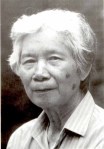
nguyen Tu nghiem
nguyen Tu nghiem ,
born in 1922 Born in Nam Dan, in the province of Nghe An, born of a literate environment, it is part of the last promotion of the school of fine arts of Indochina (1941-1945).
In 1945, he took part in the insurrection army to the decision-making power of Nam Dan, then driven To Ngoc Van, he is responsible for "resistance paint shop" in the "cultural Viet Bac corps".
From 1954 to 1960, he taught at the school of applied arts of Vietnam. Its opening is considered vital in the development of a modern national art.
He was the first to integrate into his creations of the elements of Vietnamese traditional culture such as the art of Dong - sound, old dances, cyclical animals. It also innovates depicting passages from the famous novel Kim Van kieu by Nguyen poet of.
Each of each of these themes, he knew to make many variations in gouache, lacquer and oil.
Great collector of antiquity, he likes as do paper and lacquer. His work is both, structured and musical, rhythmic, colourful, in a very punchy style. Magician of the lines, he played entirely with them, breaking them, assembling at leisure, but in a closed, closed space as if it retained an originally decorative element to be a major theme always.
Recognizing his interest in the work of Klee, Miro or Picasso that he admires he prefers, he seeks to escape from any influence to leave crab-wise in him, with his emotions, the specific nature of the soul Vietnamienne_ as much as PhaiPaint is "a vital, absolute necessity" for him, and is the result of a real moral and spiritual fulfillment.
It is one of the eight painters to have received from the Government in 1996, Ho-Chi-Minh award intended to reward the great masters of fine arts of Vietnam.
read more all in artical
- part 1 : Paris – Hanoi – Saigon: adventure of modern art in Vietnam
- part 2 : French teachers of The school of Fine Arts of Indochina
- part3: 1st Generation of The school of Fine Arts of Indochina
- part4: War Time
- part5: Renewel Time
Begining of France Art Guy of Vietnam History.
Posted: 2011/05/09 Filed under: Art, Artist, Asia, Lacquer, Lacquer Painting, Modern Art, Nguyen Gia Tri, Research, Southeast Asian, THE ECOLE DES BEAUX-ARTS IN HANOI, tradition, Urushi, Vietnam, Western Leave a comment
School of Fine Arts Indochinese, the director -Victor Tardieu
1) Role of the Arts College of Indochinaว; the director -Victor Tardieu (translated by google)
In the Art Literature Review, the weekly Asiaweek celebrates 25 years of presence (11/2000) has asserted that Vietnam Painting progress in Asia. (*) Many commentators think that is thanks Vietnam established the earliest school of Fine Arts: Fine Arts College of Indochina (École des Beaux Arts de L ‘Indochine) established in 1924, director: artist Victor Tardieu, the French.
Victor Tardieu have the opportunity to visit the temples, tombs, to study the fine arts industry, our art and realize that Vietnam is a traditional art unique, rich taste of Vietnamese people are very subtle. Therefore, he actively lobbied for the establishment of schools and the Governor Merlin passed on 27-10-1924. By 1925, the new school really taught the first course, all the French faculty, just as a teacher of Vietnamese Nguyen Nam Son. By 1930, the first class of students graduated.
“School of Fine Arts Indochinese impart perspective in science allows telecommunications access has been completed from Renaissance Italy … Of course, this scientific perspective has helped four, five-century European painting scholarly achieving aspirations describe ingenious, beautiful and reasonable all objects in space, first of all correctly (in percentage dark, light, dark and light, perspective …). If expression the advantages of formal training, to get drawn to the European science lesson. ” (1)
Though always opposed the colonial government, heavily attacked because that costs too much without any particular benefit, Victor Tardieu still persevere to the protection exist until 1945 to stop new operations: “Within less than 1 / 4 short century, the Indochina Fine Arts School has devoted a class to the avant-garde artist painting modern Vietnam. The painter, was renewing language visual language, overturning all the old habits, is a comprehensive revolution thoroughly, to lay the foundation for a new art entirely. ” (2)
School has trained the big names: Tran Van Can, Nguyen Phan Chanh, Nguyen Do Cung, Vu Cao Dam, Le Van De (later Director of College of Fine Arts Gia Dinh province), Luong Xuan Nhi, Le Pho, Nguyen Gia Tri, To Ngoc Van, … then the best talent in the last generation of schools such as Nguyen Tu Nghiem, Bui Xuan Phai, Nguyen Sang, …
Victor Tardieu great esteem, and uplift, encourage and guide dedicated to the talents of Vietnam. He personally brought the artist’s paintings of French Indochina during the exhibition on display at the Paris market effects colonies in 1931, then in Rome, London and achieved success. Victor Tardieu and the merit of this school is enormous, if not, Vietnam visual arts will also be considered to coincide with Chinese art!
read Original Veitnamese in http://www.hocxa.com/GiaiTri/GT_B/_B5_ThatHienHoiHoaVN.php
© Hoc Xá 2002
read more next artical related to this artical
- part 1 : Paris – Hanoi – Saigon: adventure of modern art in Vietnam
- part 2 : French teachers of The school of Fine Arts of Indochina
- part3: 1st Generation of The school of Fine Arts of Indochina
- part4: War Time
- part5: Renewel Time
Indocina Fine Art College in Hanoi: Renewel Time (part5)
Posted: 2011/05/09 Filed under: Art, Artist, Asia, France, Lacquer, Lacquer Painting, Modern Art, Nguyen Gia Tri, Research, Southeast Asian, THE ECOLE DES BEAUX-ARTS IN HANOI, tradition, Urushi, Vietnam, Western Leave a comment
Indocina Fine Arts College, 1929
RENEWAL TIME
After the "doi me" introduced in 1985 and thaw resulting contemporary art knows a real development. For the Vietnamese painters, first is the opportunity to be for the first time professionally exposed. But it is also the hope of making exhibitions in their own country with the opening of new galleries.
Currently personal or collective exhibitions open virtually every day in Hanoi to Ho Chi Minh City. Several premises owned by public institutions, associations of fine arts or cultural services are converted into exhibition halls specialized development numerous galleries.
If the North school admits a more social aesthetic and committed viscerally figurative, the school of the South said more readily, abstract and matiériste:
Northern School truong Tan ,born in 1963 A graduate of the Ecole supérieure des beaux-arts of Hanoi, he works on different media (rice, canvas, cloth paper) lacquer and acrylic.
It seeks to realize its me in a simple and direct way. It stands to the physiological and psychological rejection due to the prejudices of a traditional society having kept the conservative mores.
By combining its figures to writing, he speaks itself without complex and not without hyperbole. His figures with sexual organs of different forms are open, and violent protests and a sexual claim asserted: it uses the graffiti to talk about homosexuality.
Dinh Y IHN born in 1967  A graduate of the Ecole des beaux-arts in Hanoi, she is the daughter of the painter Dinh Trong Khang.
A graduate of the Ecole des beaux-arts in Hanoi, she is the daughter of the painter Dinh Trong Khang.
Gouache and always the same colours (black, white, grey), his compositions are organized around the human figure that she stylized to the extreme and repeated to infinity. Kind of strange query or reflection on the human condition, his suffering, his dilemmas.
The school of the South trung nguyen, Nguyen Thanh Trung, born in 1940 Born in the province of Hau Jiang, it follows the course of the school of fine arts of Saigon between 1958 and 1963.
Regarded as the leader of the painters of the South, he was President of the association of young painters of Saigon in the 1970s.
After briefly by the realism style belongs to the abstract current and uses as support the oil painting. It attaches paramount importance to the subject it deals with dark colors and with great care, the permeating of fine paths.
dao minh Tri, born in 1950 Born in Hanoi, a graduate of the Ecole supérieure des beaux-arts of Vietnam (1971-1976), he likes to vary the materials and techniques (oil, paper do, silk, lacquer).
Her work as a realistic first (inspired by the art of temples, pagodas and popular paintings) is now quite abstract, he enjoys contrasted colours and withdraw of figurative elements to redesign them as his inspiration in solid compositions
It is however committed now in topics relating to fish, it barrier showy colors of lacquer.
The exhibition concludes with the tribute of some French contemporary artists in Vietnamese art of today, such as Christine Jean or Eric leroux, parties in Vietnam find lost secrets.
read more all in artical
- part 1 : Paris – Hanoi – Saigon: adventure of modern art in Vietnam
- part 2 : French teachers of The school of Fine Arts of Indochina
- part3: 1st Generation of The school of Fine Arts of Indochina
- part4: War Time
- part5: Renewel Time
French teachers of the school of fine arts in Hanoi: Indochina Time (part2)
Posted: 2011/05/09 Filed under: Art, Artist, Asia, France, Lacquer, Lacquer Painting, Modern Art, Nguyen Gia Tri, Research, Southeast Asian, THE ECOLE DES BEAUX-ARTS IN HANOI, tradition, Urushi, Vietnam, Western Leave a commentINDOCHINA TIME
The retrospective Arts Pavilion proposes to first gather all the paintings and sculptures of French teachers, such as Victor Tardieu, Joseph Inguimberty Evariste Jonchère, or André Mayor and their students as may Thu, Lê Phô or Nguyen Gia Tri.
Victor Tardieu and Evariste Jonchère are graduates of the national Ecole supérieure des beaux-arts in Paris, Joseph Inguimberty of the national school of the decorative arts of Paris, finally André Mayor worked diligently under the direction of Emile Bernard, whom he married the daughter:
French teachers of the school of fine arts in Hanoi
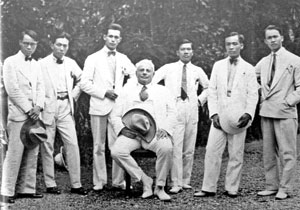
Professor Victor Tardieu and beginning of the course students of Arts College of Indochina. Artist Le Pho in the left.
- Victor tardieu (1870-1937)
 It is in April 1870, he was born in Lyon in a family of silky. Very young it incorporates the school of fine arts of his city and then to Paris in the workshop of Bonnet, in 1892. He quickly practice of large compositions. The prem��������������ière will be a stained glass for the Hall of the city of Dunkerque hotel (destroyed in 1940). With his work (construction site scenes) table, it gets national award which will allow him to travel to Europe for two years, with his wife, the daughter of composer Luigini. He painted particularly large ports (genes, London, Liverpool).
It is in April 1870, he was born in Lyon in a family of silky. Very young it incorporates the school of fine arts of his city and then to Paris in the workshop of Bonnet, in 1892. He quickly practice of large compositions. The prem��������������ière will be a stained glass for the Hall of the city of Dunkerque hotel (destroyed in 1940). With his work (construction site scenes) table, it gets national award which will allow him to travel to Europe for two years, with his wife, the daughter of composer Luigini. He painted particularly large ports (genes, London, Liverpool).
Returning to Paris in 1906 he runs a large fresco for the mairie des Lilas (160 m²) on the theme at the time of Paul de Bock, while also achieving numerous portraits. In 1914 he undertakes voluntary and participates in the war in the North. In 1920, he performs a large second composition to the mairie de Montrouge ages of life. The same year he received the award of Indochina and sailed for Hanoi, where he was to stay a few months.
He designed a large canvas of 180 m ² for the Auditorium of the University of Hanoi, The metropolis and another for the room of the library of the city. Only remains the first but it is not accessible. In 1925, he took the direction of the school of fine arts of Indochina just be created on his initiative and the most faithful friend and collaborator Nguyen Nam sound.
He returned a few months in France to recruit his college faculty and then finally starts in Hanoi where he died on June 12, 1937.
Victor tardieu, tradition painter classic (he sought "to make, he said, the beauty of the human body as the Greeks") but sensitive to the master Impressionists. It contributes greatly to the success of the school of fine arts of Indochina helped his most faithful friend and collaborator Nguyen Nam sound. He believed deeply in the value of his students with whom else he knows establish privileged links. He ran, wrote - it, "more interesting than the French".
His works are in museums of Lyon, Rennes and at the Museum of the army to Paris.

Victor Tardieu, french painter who was decisive in the development of Vietnamese art scene from 1925-1945@artyii.com
- Joseph inguimberty (1896-1971)
 Born in Marseille in January 1896 he was soon attracted to drawing and hesitate between a career of painter and architect. It integrates finally in 1913 the higher national school of decorative arts of Paris in the workshop of E. Morand.
Born in Marseille in January 1896 he was soon attracted to drawing and hesitate between a career of painter and architect. It integrates finally in 1913 the higher national school of decorative arts of Paris in the workshop of E. Morand.
In 1920, he obtained a first grant of trip which takes him in Holland and Belgium, and inspires him its first large-scale compositions. He won the prix Blumenthal in 1922. He directed a large triptych dedicated to the life of the port of Marseille (three tables of five metres on four, Marseille, the landing of the plaster, the landing of peanuts).
New departure towards the Italy, the Spain and the Greece. In 1925, he is recruited by Victor Tardieu, to lead the Department of painting of the school of fine arts in Hanoi, what it will do until 1946. It creates a substantial section on the technique and the art of lacquer.
Back to France he finds inspiration in the landscapes of Provence (leases, Eygalières, Chin-participates in numerous exhibitions both in Paris in the afternoon.
While belonging to the "realistic" school, his opens can be divided into three periods:
–Before 1925, it is the period of large compositions, which reflect the atmosphere of the time, praise the virtues of the work (social connotation). His painting is strong, structured and yet quite academic.
–From 1925 to 1945, it is the Indochinese period where the line fades for the benefit of the color to better portray the tropical atmosphere (he likes rural themes).
–And finally the Provençal period where he continued his work on color and light, close by the Impressionist current.
Independent nature man, worker, hard, a reserved first, he played a role first plan at the school of fine arts in Hanoi.
- Evariste Jonchère
(1892-1956). From the age of sixteen, Evariste Jonchère which shows a taste and an obvious talent for drawing was admitted to the national Ecole supérieure des beaux-arts in Paris, in the workshop of Antonin Mercié and then after the war he work in the workshop of the sculptor Boucher.
In 1925, he was awarded the grand prix de Rome for a opens entitled harvest. After a stay of four years in Italy, he taught at the école des beaux-arts in le Havre. In 1932, he won the prize in Indochina and part of Vietnam where he spent two years to paint and sculpt. On the way back he undertakes a quasi-tour of the world (Manchuria, Japan, San Francisco, Newfoundland, etc.).
In France, he resumed his work of sculptor, while participating in the universal exhibition of 1937. The following year he was appointed Director of the school of fine arts of Indochina taking Victor Tardieu suite
It will remain there until 1944, doing considerable work. It consolidates it opens its predecessor, develops the section of lacquer, creates art applied throughout the country schools, organizes the promotion of works from these schools.
His return from France, he began again in great achievements such as the one for the Elysee Palace.
It is going to Africa, to the quest for new inspirations, and he was appointed in 1952 Director of the Ecole supérieure de Brazzaville.
In 1955, he moved to Paris, where he resumed his work as a sculptor. He died the following year.
While offering a fairly typical, organized routes around three poles: the official controls, education, personal development, life and opens it to Evariste Jonchère are particularly interesting. It was sort of pushed to the extreme these three activities that reflect not only his great talent but also of an exceptional working ability.
André Mayor
(1898-1984) At the age of twelve years, André Mayor expresses her attraction to the drawing and follows the course of the city of Paris. His parents then seek the opinion of Emile Bernard, who encouraged him in this way. The latter would become its master.
In 1917, he follows A stream. Devambez in fine arts and then it is mobilized. On the advice of Emile Bernard, he asked go in Indochina where he performs his military service in the infantry.
He taught at the same time drawing at Lycée Chasseloup-Laubat in Saigon and circulating as it sees fit, he discovered the site of Angkor who will mark forever. On this occasion, he established number of sketches and surveys to be used in the reconstruction of the temples of Angkor at the exhibition of 1931. His stay in Asia allows him to take back to the influence of Emile Bernard.
After two years in Italy painted many views of Venice, Trieste, Rome, he returned to France in 1928 and moved in 1930 to Semur en Auxois which becomes its anchor point.
His taste for large formats, the architecture, the prospects, the elongated characters is now well established.
In 1938, new departure to Egypt, India, Ceylon and for Africa in 1945. In 1948, he returned to Vietnam where he remained until ' in 1955, Professor of drawing and modeling at the school of architecture in Saigon.
It opens considerable André Mayor enrolled in a perspective decorative correlated with the spirit of time on the other hand, in a vision that could be described "as enlightened humanist". His compositions hit by their balance, the rigour and the safety of the line, showing great consistency in the decorative and poetic spirit. His drawings of monuments are as a hymn to the creator of human engineering but also to what anime deeply, the ubiquitous spirituality.
read more all in artical
- part 1 : Paris – Hanoi – Saigon: adventure of modern art in Vietnam
- part 2 : French teachers of The school of Fine Arts of Indochina
- part3: 1st Generation of The school of Fine Arts of Indochina
- part4: War Time
- part5: Renewel Time
Source: http://asiep.free.fr/printempsvietnam/par-han-sai.html
translate by microsofttranslator.com
The school of Fine Arts of Indochina: 1st group of Student (part3)
Posted: 2011/05/09 Filed under: Art, Artist, Asia, France, Lacquer, Lacquer Painting, Modern Art, Nguyen Gia Tri, Research, Southeast Asian, THE ECOLE DES BEAUX-ARTS IN HANOI, tradition, Urushi, Vietnam, Western Leave a comment
Indocina Fine Arts College (Ecole Superieure des Beaux-Arts de), 1929 . Source: The Fine Arts Publishers
1st generation students of THE ECOLE DES BEAUX-ARTS IN HANOI
May Trung Thu,(1890-1973)
A graduate of the school of fine arts of Indochina in 1930 (first promotion), he became Professor of drawing at Huế where he likes to attend the musicians of this city. In 1937 that he arrived in France at the international exhibition where his works are presented and decided to settle there.
While participating in the Salon des Indépendants and fall, it became known by playing doc-huyen, monotonous instrument. He participates regularly in concerts of traditional music, in the company of the famous musicologist Tran Van Khe.
Committed voluntary in 1940, the armistice he remains blocked some time to Mâcon where it performs a setting for one of the chapels of the Saint-Pierre church.
In 1942, he was invited by Algeria. Back in Paris, apart from a few film on Vietnam, he devoted himself to his painting.
Character independent, discrete, this full artist quickly used silk as pictorial support, according to a technique he developed to the point of successive washes to soften the tones. His favourite themes are children and young girls that it depicts intimate way.
In an idealized vision its women are Gracile, elongated, pensives or nostalgic. The culvert is light in the edges, subtle, controlled compositions in which nature is merely incidental.
May Thu is a verbose painter, influenced by the aesthetic japonisante, it pushes the refinement up to conduct himself coaching of his works, he adorns scrolls in gold leaf.
Lê Phô (1947 1907) 
Born in Ha Tay province into a family of senior mandarins (his father is the viceroy of Tonkin), he joined the school of fine arts of Indochina from its inception (promotion 1925-1930).
The colonial exhibition of 1931 of Vincennes where his works are presented and where he attended Victor tardieu, Member of the Board of the craft section of the exhibition. He stayed in France and follows a year of courses at the Ecole des beaux-arts in Paris. Then he traveled to Belgium, Holland, Italy where he discovered the "primitives" that will greatly influence its opens.
In 1933, he returned to Vietnam and he teaches at the Ecole des beaux-arts in Hanoi while achieving official orders for the Palace of Hué.
It was in 1937, while he is the Director artistic Division of Indochina in the international exhibition, that he decided to settle in France. In 1941, with the painter may Thu, he is invited to exhibit in Algeria.
It is one of the most renowned Vietnamese painters. While both working painting technique to oil and silk, he seems to have, over the years, rather preferred the first.
Through its preferential themes, women and flowers, can be distinguished an interesting stylistic evolution:
- – the classical period, which corresponds to the Vietnamese years where a solid brush, insured, it creates and works inspired by its close environment as evidenced "the wife of the mandarin" or "home of the Tonkin".
- – the primitive period, determined by his trip to Italy. It adopts a more idealistic vision, faces to refine, the stroke is lighter, the shimmering palette is worked in stillness on silk.
- – the last period is, through exclusively technique in oil, light, with the use of a particularly sustained yellow, that he worked in the Impressionist manner, by removed keys and bright, the brush stopping at more length on the faces.
Nguyen Gia Tri (1908-1993)
(Originally from the province of Ha Tay, it incorporates the school of fine arts of Indochina in 1929 fifth promotion) but interrupted his education. Prompted by Victor Tardieu to resume it, it is then among students in the seventh promotion which he eventually graduated.
In 1946, he left Hanoi for Hong Kong where it preferentially uses the technique of oil painting. It remains there until 1951.
In 1954, he left living in Saigon, leading a studious, withdrawn, fully vested existence to painting.
He knew wear at its peak the art of lacquer, seduced by the possibilities of this matter so subtle and Eastern decorative and pictorial. Sanded lacquer technique was for him a quasi-révélation.
Nguyen Gia Tri realized between 1939 and 1945 a very large number of works in panels, screens, doors of Cabinet. To do this, he used in his Studio to surround themselves with a team of artisans lacquerers.
Its vibrant, valuable, while pace style is a kind of allegorical dream vision in which young women air and dancing move.
From 1966, he begins to run, lacquer, paintings of abstract invoice, which he had long desire.
Artist to right and gentle temperament, he has truly revolutionized this material, applying overlays to the shell of egg, using extensively the rich colours (gold, red, yellow) while knowing the oil by the affixing of shaded areas where sometimes appear a few touches of Prussian blue household.
In an interview of September 1979 (with Nguyen Xuan Viet) artist insists on the need to respect the material, to ensure that it follows the idea while using so that each detail reflects light.Real magician of lacquer, that opens more results that any other of a fit perfect and absolute osmosis between the artist and the material.
read more all in artical
- part 1 : Paris – Hanoi – Saigon: adventure of modern art in Vietnam
- part 2 : French teachers of The school of Fine Arts of Indochina
- part3: 1st Generation of The school of Fine Arts of Indochina
- part4: War Time
- part5: Renewel Time
- Artist: Master Nguyen Gia Tri (1)
- Artist: Nguyen Gia Tri (Vietnam 1908-1993)(2)
- Artist: NGUYEN GIA TRI (note from Artfact.com)(3)
Source: http://asiep.free.fr/printempsvietnam/par-han-sai.html
translate by microsofttranslator.com
Paris – Hanoi – Saigon: adventure of modern art in Vietnam (part1)
Posted: 2011/05/09 Filed under: Art, Artist, Asia, France, Lacquer, Lacquer Painting, Modern Art, Nguyen Gia Tri, Research, Southeast Asian, technique, THE ECOLE DES BEAUX-ARTS IN HANOI, tradition, Urushi, Vietnam, Western Leave a commentTHE ECOLE DES BEAUX-ARTS IN HANOI

Opera House early twentieth century, Trang Tien, Hanoi @Paul Bert
Apart from the works of a few rare painters Vietnamese trained in Paris, the modern painting was born in the Viet Nam with the creation of the Ecole des Beaux-Arts in Hanoi in 1925.
Many French painters including Victor Tardieu landed in Indochina at the end of the 19th century, for exoticism. They are generally missionnés by the Government, through art, who sees a way to knowing the distant Indochina from the French of metropolis, and to import French culture in Vietnam.
In the year 1910, the Government systematizes the coming of the French painters in the colony, by the establishment of the Indo-China price that offers a travel grant recipients. Thus, when the school of fine arts of Indochina opens its doors in 1925, the Victor Tardieu (price Indochina 1920) painter is also Director until his death in 1937.
In the Organization of courses, the school of fine arts of Indochina is globally superior rearrangement of the Ecole nationale des beaux-arts in Paris. Theoretically, this school must try to reconcile Vietnamese traditions with a Western approach to art.
The exposure of the Arts building cut into three sections:
- Indochina time: Teachers of THE ECOLE DES BEAUX-ARTS IN HANOI
- Their Student: The 1st generation
- The time of the war
- The time of renewal
read more all in artical
- part 1 : Paris – Hanoi – Saigon: adventure of modern art in Vietnam
- part 2 : French teachers of The school of Fine Arts of Indochina
- part3: 1st Generation of The school of Fine Arts of Indochina
- part4: War Time
- part5: Renewel Time
Source: http://asiep.free.fr/printempsvietnam/par-han-sai.html
translate by microsofttranslator.com
Treatments For Poison effect : urushiol allergen on skin
Posted: 2011/01/24 Filed under: Lacquer, Lacquer Painting, materails, Research, THE ECOLE DES BEAUX-ARTS IN HANOI, Urushi Leave a commentTreatments For Poison effect from Poison Ivy, Poison Oak, Sumac. Some of Them might help clean “urushiol” that causes a complicated delayed allergic reaction.
Try them if you couldn’t stop Working with Lacquer during your skin irritation.
Tecnu Extreme Medicated Poison Ivy Scrub (4 oz)
|
Product Description: Tecnu Extreme Medicated Poison Ivy Scrub is an all-in-one solution for poison ivy, oak & sumac sufferers. A unique formula combines an exfoliating scrub to remove the poison Urushiol oils that cause rashes. Includes a rash-healing active ingredient that relieves itching and speeds healing. Can be used within hours of exposure or after rash breaks out.
Boericke & Tafel – Oral Ivy, 1 oz liquid
//


| List Price: | $12.99 |
| Price: | $9.33 ($9.72 / oz) |
|
|
Product Description: For the prevention of contact dermatitis associated with poison ivy, poison oak or poison sumac. Temporarily relieves itching, red or burning skin rashes, blisters with oozing or crusting, and skin irritation or swelling.
////
Burt’s Bees Poison Ivy Soap, 2-Ounce Packages (Pack of 2)
Burt’s Bees Poison Ivy Soap One Color, One Size
| List Price: | $15.98 |
| Price: | $13.91 |
Product Description
You thought you gave all three-leaved, hairy-rooted brush a wide berth, but it appears that the dreaded PI struck once again on your hike. No worriesjust use the Burts Bees Poison Ivy Soap for soothing, long-lasting relief. This natural soap uses jewelweed to help cut down on irritation and itching, and pine tar and tea tree oil for antiseptic. Simply wash the affected area with this soap, rinse, and then wash again and let the lather dry on your skin. Repeat two to three times a day.Product Features
- Ingredients: Vegetable soap base, kaolin, avena sativa (oat) kernel protein, melaleuca alternifolia (tea tree) leaf oil, pinus palustris (pine) wood tar, impatiens balsamina (jewelweed) extract
- Volume: 2oz
- Recommended Use: Poison ivy relief
- Manufacturer Warranty:

Ivy Block – 4 oz
Description
Ivy Block Lotion has been shown in medical literature to help reduce the penetration of the chemical responsible for causing poison ivy, oak and sumac.
Significantly diminishes the severity of poison ivy/oak/sumac, as well as helps to prevent it altogether for a significant number of individuals. MUST be applied 15 minutes prior to exposure.








